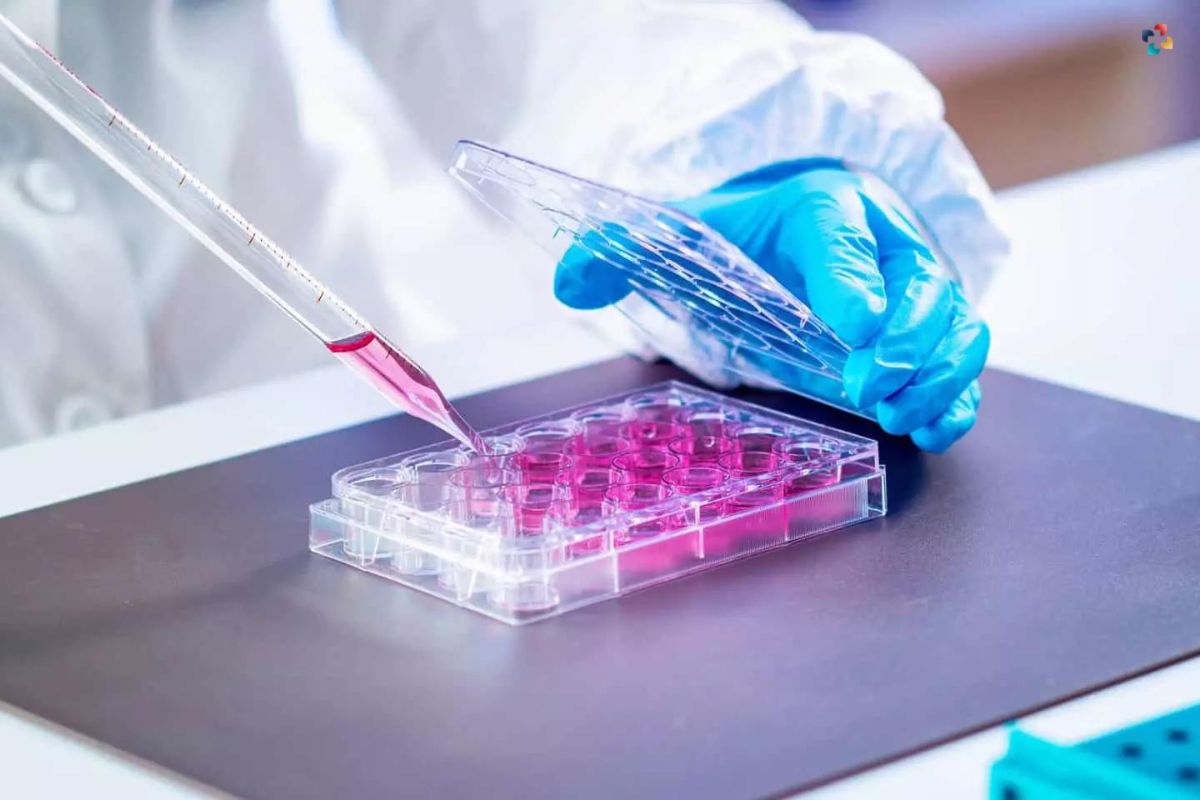Trends in IVF Technology :
Since the birth of Louise Brown, the first baby born through in vitro fertilization, in 1978, assisted reproductive technology has advanced significantly. The success rate of in vitro fertilization (IVF) has risen dramatically over the last four decades as a result of developments in incubation methods, micromanipulation technology, and a general understanding of assisted reproduction.
Thanks to developments in science and assisted reproductive technology, we are able to provide you with cutting-edge treatment options designed to increase your chances of having a healthy baby. Our clinic is equipped with the following types of cutting-edge assisted reproductive technology: We encourage you to inquire about the advantages of these cutting-edge IVF procedures.
Let’s dive into Trends in IVF Technology:
1. IVF Treatment with Cytoplasmic Transfer

Cytoplasmic transfer in vitro fertilization (IVF) is a revolutionary step forward Trends in IVF Technology. Women of advanced maternal age, those with known mitochondrial DNA problems, and women of advanced maternal age who have damaged cytoplasm and mitochondria in their egg cells may all benefit from this therapy approach.
The mitochondria, a kind of organelle located in the cytoplasm of a cell, is essential for the cell’s survival and growth since it is responsible for producing energy and regulating the cell’s division and growth. It’s the “engine” that drives the cell. The offspring (child) gets exclusively maternal mitochondrial DNA during reproduction, implying that the infant obtains no mitochondrial DNA from any other source. These include Trends in IVF Technology.
The infant will also have defective mitochondrial DNA and will have developmental issues if the mother has mitochondrial DNA defects. Mitochondrial DNA in the mother may become flawed for a number of reasons, including inherited conditions and simple aging.
This technique, known as cytoplasmic transfer, involves combining the genetic material from the egg of the recipient with the cytoplasm (the fluid within the cell that includes essential organelles, including the mitochondria) of a young and healthy egg donor. What this means is that the patient’s egg cell receives a shot of healthy mitochondria, giving it a fresh lease on life.
Problems with aged eggs’ cytoplasm and organelles may be remedied with this technique. While cytoplasmic transfer improves the host environment in which a patient’s own genes may flourish, it cannot reverse the effects of aging on a patient’s genes.
Conspicuous birth abnormalities like Down syndrome and others that may be traced back to a mother’s genes are more common among children born to older mothers. Although cytoplasmic transfer helps the embryo grow in a healthy setting, it cannot fix the genetic defects caused by the deterioration of the egg’s genetic material over time. This is also Trends in IVF Technology.
Patients over the age of 40 who have a sufficient degree of ovarian function but who have been unsuccessful with conventional IVF/ICSI should consider undergoing cytoplasmic IVF therapy is Trends in IVF Technology. The success rate of employing a patient’s own eggs rises when they are fed a better fuel source.
But because of the increased risk of genetic defects in offspring in individuals over the age of 40, we propose that pre-implantation genetic screening be used to check for chromosomal aneuploidies in embryos generated using cytoplasmic transfer before embryo transfer. Please visit our “Cytoplasmic IVF Transfer” page for more details.
2. Microfluidic Chip for Sperm Selection
One of the most significant turning points in the development of assisted reproductive technologies was the discovery of intracytoplasmic sperm injection (ICSI). By allowing embryologists to fertilize the eggs directly with a hand-selected sperm cell, ICSI has drastically increased fertilization rates compared to traditional IVF approaches,
Which simply involves placing the eggs and sperm in a dish and hoping the sperm would fertilize the eggs on their own. Hundreds of thousands of men have been able to become dads with the use of ICSI after prior IVF cycles failed to owe to insufficient sperm parameters for fertilization.
After in vitro fertilization (ICSI), the MicroFluidic Chip has been the most significant development in assisted reproduction. By simulating the routes in the cervical region of the female reproductive system, the MicroFluidic chip is able to prevent the vast majority of genetically flawed sperm from crossing through.
One side of the chip contains the sperm sample. This is the beginning of the sperm cells’ trip to the fallopian tubes, which is quite similar to the cervical route. It is considered to be Trends in IVF Technology. In order to ensure that only genetically healthy sperm cells with fertilization potential make it to the finish line, the chip employs a series of mechanisms that prevent damaged sperm cells from completing the race.
In other words, whereas ICSI enables the embryologist to pick the “best” sperm cells based on appearance, the MicroFluidic chip enables the embryologist to select the “best” sperm cells based on both morphological and genetic traits.
Couples with male factor infertility and who have tried IVF Technology before but had low fertilization rates or early losses that they believe were caused by sperm DNA abnormalities may benefit from using the MicroFluidic chip. Is one of the Great Trends in IVF Technology.
3. Stem Cell Therapy for Non-Obstructive Azoospermia

Both the field of cosmetics and the field of orthopedics have recently benefited from stem cell therapy. IVF therapies may benefit from endometrial rejuvenation and sperm cell production thanks to the concept of employing stem cells for the rejuvenation of the existing cell lines (spermatogenesis) are also Trends in IVF Technology.
The stem cells may develop into sperm by being directed to become the progenitors of germ lines. Evidence from studies shows that mesenchymal stem cells not only aid in the expansion of cell line populations but also help generate a positive immunological response, which boosts the treatment’s chances of success. It is said to be Trends in IVF Technology.
Non-obstructive azoospermia is a prominent problem in male infertility. In cases of obstructive azoospermia, surgical sperm extraction/aspiration techniques like percutaneous endoscopic sperm aspiration (PESA) or transcervical endoscopic sperm aspiration (TESA) can be effective in obtaining live sperm cells, which are then used in in vitro fertilization (IVF) treatments to fertilize the oocytes of the female partner.
In contrast, in non-obstructive azoospermia, nothing is blocking or obstructing the sperm. No sperm cells are being produced. This may be the result of a genetic flaw, an injury, or medical treatment (such as chemotherapy or radiation therapy) for cancer. To date, sperm donation has been the sole approved therapy for non-obstructive azoospermia, regardless of the underlying etiology.
Recent animal experiments have revealed that mesenchymal stem cells produced from adipose tissue may differentiate into sperm-like cells, restoring fertility. Patient-derived mesenchymal stem cells are promising since they have the lowest risk of undergoing malignant transformation. This might lead to their use in the near future for restoring male fertility. For further details, please review our article titled “Stem cell treatment for non-obstructive azoospermia.”
4. Human Growth Hormone During IVF Cycles
Human growth hormone was first used in IVF cycles a few years ago with the goal of increasing the quality of the oocytes produced throughout the cycle. Previous research had little success in seeing any effects, but a recent study has shown that human growth hormone supplementation, when administered at the optimal time, enhanced oocyte quality and conception rates.
By stimulating small pre-antral follicles that would not have been stimulated using standard ovulation induction protocols used in IVF/ICSI treatments, starting human growth hormone not on the cycle of ovulation induction, but earlier, has proven to positively affect the outcome of an ovulation induction cycle.
The findings of this research led to the Food and Drug Administration approving human growth hormone clinical trials. However, the same clinical experiment has been made commercially accessible at North Cyprus IVF Center as of the beginning of 2016 (despite the fact that it is only open to a select group and results won’t be available until 2018).
Thus far, 11 individuals have been treated with HGH, and we expect to be able to publish our own statistics by the middle of 2017. For the same price as regular human growth hormone injections, you may take advantage of this therapy option from us. It has been known as the Trends in IVF Technology.
To boost yourself more in Trends in IVF Technology
5. Intralipid Infusion Therapy and Neupogen Wash in IVF Cycles

To protect the embryo against NK cells, women with high natural killer cell counts are now given an infusion of intralipids before and after embryo transfer as part of a relatively recent development in vitro fertilization (IVF) therapies. To avoid having the embryo destroyed because the immune system considers it as a “foreign object,” this strategy involves dampening the immunological response both before and after embryo transfer.
Patients who have tried many IVF cycles without success and women who have had repeated miscarriages, which may be caused by an overactive immune system, may benefit from intralipid infusion treatment.
Neupogen washes have mostly supplanted intralipid infusion therapy as a treatment option as of late. It is important to note that Neupogen is a recombinant version of G-CSF (granulocyte colony-stimulating factor). In the reproductive system, G-CSF plays a crucial function as a chemical messenger. A greater amount of this substance in the female body has been linked to better embryo viability and increased IVF success, as evidenced by clinical studies.
Using nitrogen as a subcutaneous injection plus an endometrial cavity wash has been shown to increase endometrial lining thickness, which is beneficial for IVF cycles. Neupogen administration at sperm-inhibiting time points during an IVF cycle has been proven to increase pregnancy rates in comparable trials of individuals with recurrent IVF failures.
However, the precise application and time gap within the cycle are of paramount importance. Neupogen has worked similarly well for us over the last several months, so we do advocate and utilize it, especially for people in the older age ranges or with unexplained IVF failures. These are useful Trends in IVF Technology.











